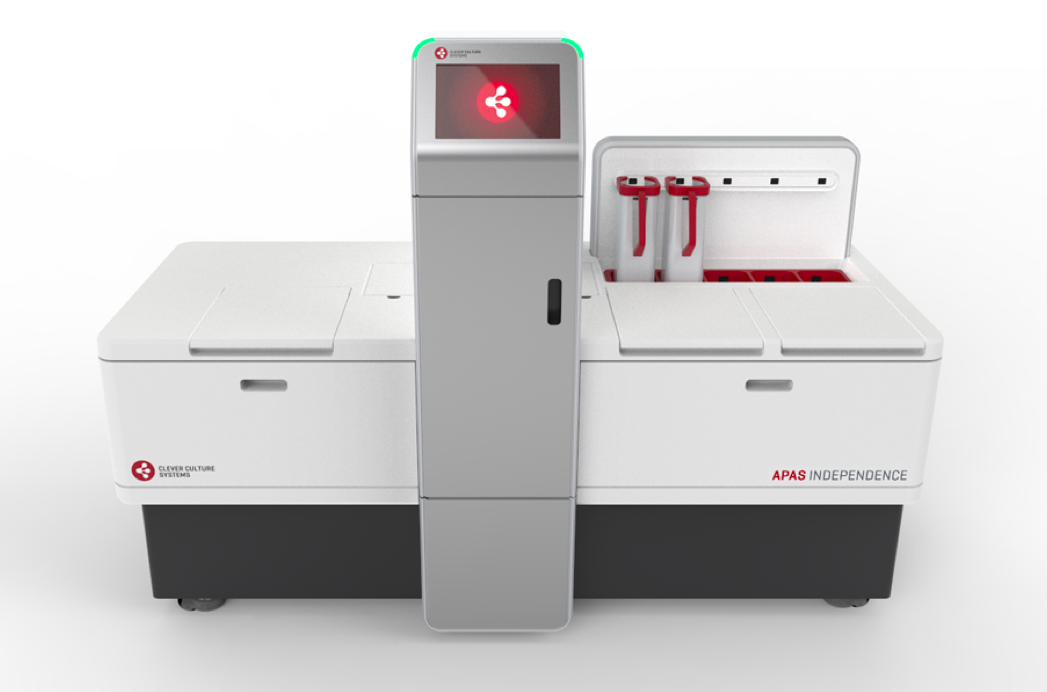Former Cochlear exec’s robot microbiologist is four times faster than a human

Pic: REB Images / Tetra images via Getty Images
Brent Barnes used to be a senior executive for the $8 billion health innovator Cochlear. Now he’s in charge of a comparatively tiny $44 million company, and he’s hoping a robot that can read petri dishes will make it as much of success as his old employer.
The Automatic Plate Assessment System by LBT Innovations (ASX:LBT) can analyse culture samples about four times faster than a human microbiologist and is designed to speed up patient diagnoses in the lab.
The technology, dubbed APAS, has been a long time coming and has been watched closely by investors.
LBT’s shares more than tripled for a brief period in October last year, when it announced the system had received approval from the FDA in the US — though they fell again when it became clear that actual product sales were still a way off.
“It’s a double-edged sword a little bit, because there was a huge amount of speculative day trading and people not really understanding the product and what we’re doing,” Mr Barnes told Stockhead.
“It was a really important milestone, but the reality was we were still 12 months away from having a product to sell.”
That point is now fast approaching, with the first APAS Independence instrument to be deployed in St Vincent’s Hospital in Melbourne in September, followed by broader Australian sales orders opening in January.
The APAS Independence is made by a joint venture between LBT and German lab equipment maker Hettich, called Clever Culture Systems.
The machine can “read” as many as 200 culture sample plates per hour, compared to about 40 to 60 that a human microbiologist can get through. Most of those plates will be returned negative.
“It allows microbiologists to really focus on the specimens that actually need their interpretation and input,” Mr Barnes said.
When Mr Barnes and LBT submitted the APAS Independence to the FDA, they found out there were no other devices in the same category, making them confident of having the market to themselves. However the units will not come cheap.
“In terms of the cost of the instrument, the end user prices for the APAS Independence will be around $US300,000,” said Mr Barnes.
“Then there’s also going to be an annual software license. There’s no consumables, but there’s an annuity with respect to the software license. The cost of that will be in the range of $US25,000 to $US40,000 per year.”

From streaking to reading
The APAS Independence’s journey into the lab has been a long one. LBT listed on the ASX more than a decade ago, in 2006. Its initial product was designed to assist microbiologists with the “streaking” process.
“If you have a urinary tract infection, or you think you do, you give a urine sample, that sample goes to a pathology lab or a hospital and it goes through the culture plate process,” Mr Barnes said.
“The first step is that you put the specimen into a petri dish, and then it goes into an incubator for about 18 hours. After that, someone takes it out and they measure if there’s any bacteria or colony growth on the plate.”
Streaking is what occurs when the sample is put on the plate. Either a person or machine has to spread the sample over the dish smoothly to encourage bacteria growth.
“That (original) product was sold for a number of years through a partner called Biomerieux, which is a big French biotech company,” Mr Barnes said.
“The profits during that time allowed us to develop our current technology (APAS) which delivers the plate and also reads and interprets it.
“We take a photo of the agar plate, or petri dish, and using AI, or machine learning, we’ve trained an algorithm to interpret what’s on that plate to determine whether there’s colony growth on that plate.
“It goes much further than a simple yes or no. It’s actually able to identify the specific colony type and a colony count, which means to count the number of colonies that have grown.”
To test APAS, LBT conducted a clinical trial where the instrument inspected 10,000 patient samples, which were then also inspected independently by three microbiologists.
“There was no collaboration between the three (humans), and then we compared the results,” Mr Barnes said.
“The outcome was that APAS was in fact about 1 percentage point more reliable than the three microbiologists.”
Mr Barnes joined LBT in August 2016, replacing co-founder and long-standing CEO Lusia Guthrie, who is currently the chairman of Clever Culture Systems. Prior to that Mr Barnes spent more than a decade at Cochlear, where he eventually became general manager of Asia growth markets.
LBT’s shares have traded between 16c and just above a dollar over the past 12 months, peaking on news of the FDA approval.
The company received $38,073 in the June quarter thanks to reimbursements from Clever Culture Systems which offset costs, bringing its cash held to $3.5 million. However it expects to spend almost $3.2 million of that in the current quarter, including a $1.25 million loan to the same joint venture entity.
This article does not constitute financial product advice. You should consider obtaining independent advice before making any financial decisions.
UNLOCK INSIGHTS
Discover the untold stories of emerging ASX stocks.
Daily news and expert analysis, it's free to subscribe.
By proceeding, you confirm you understand that we handle personal information in accordance with our Privacy Policy.








